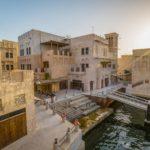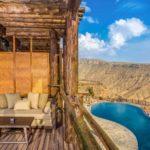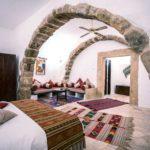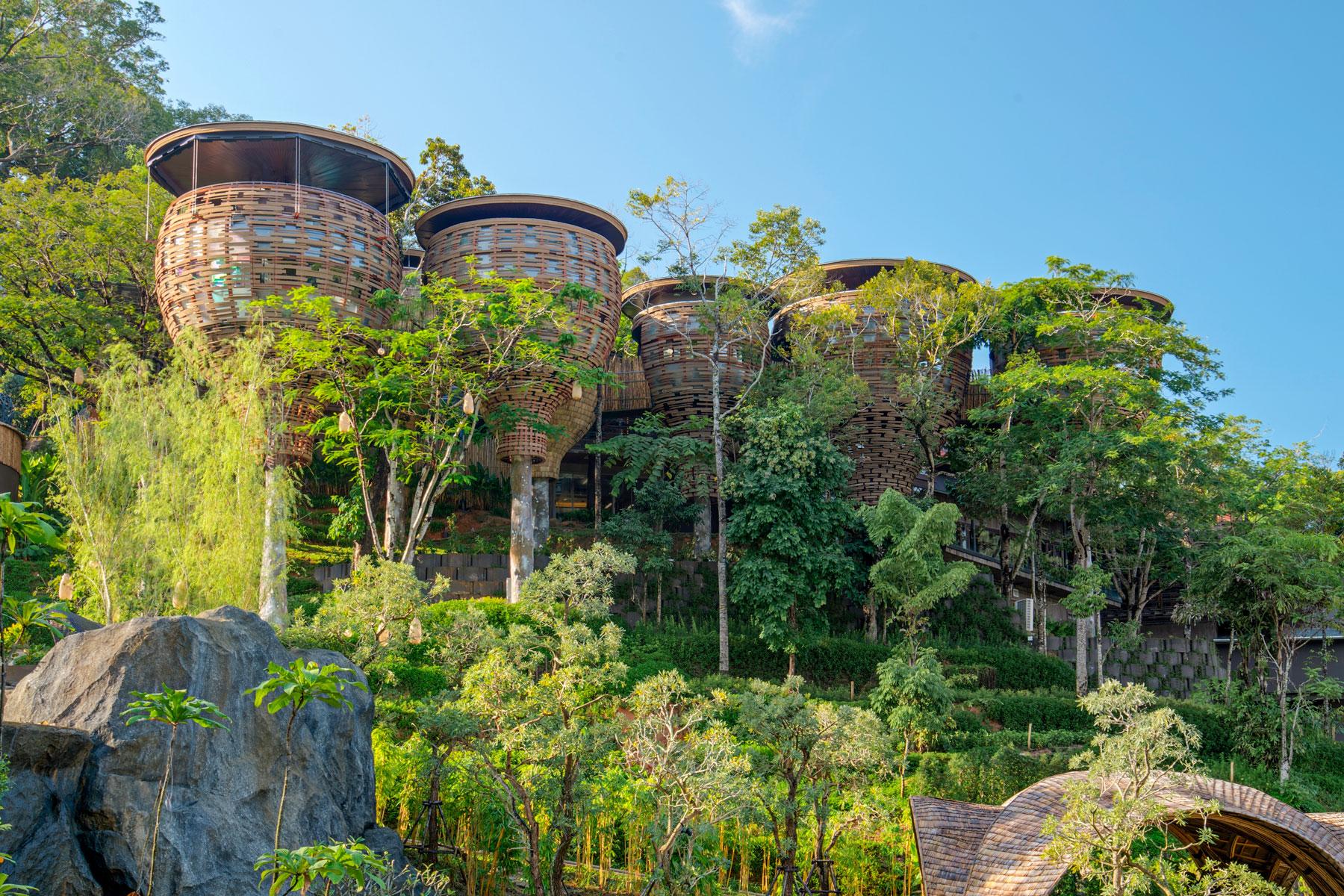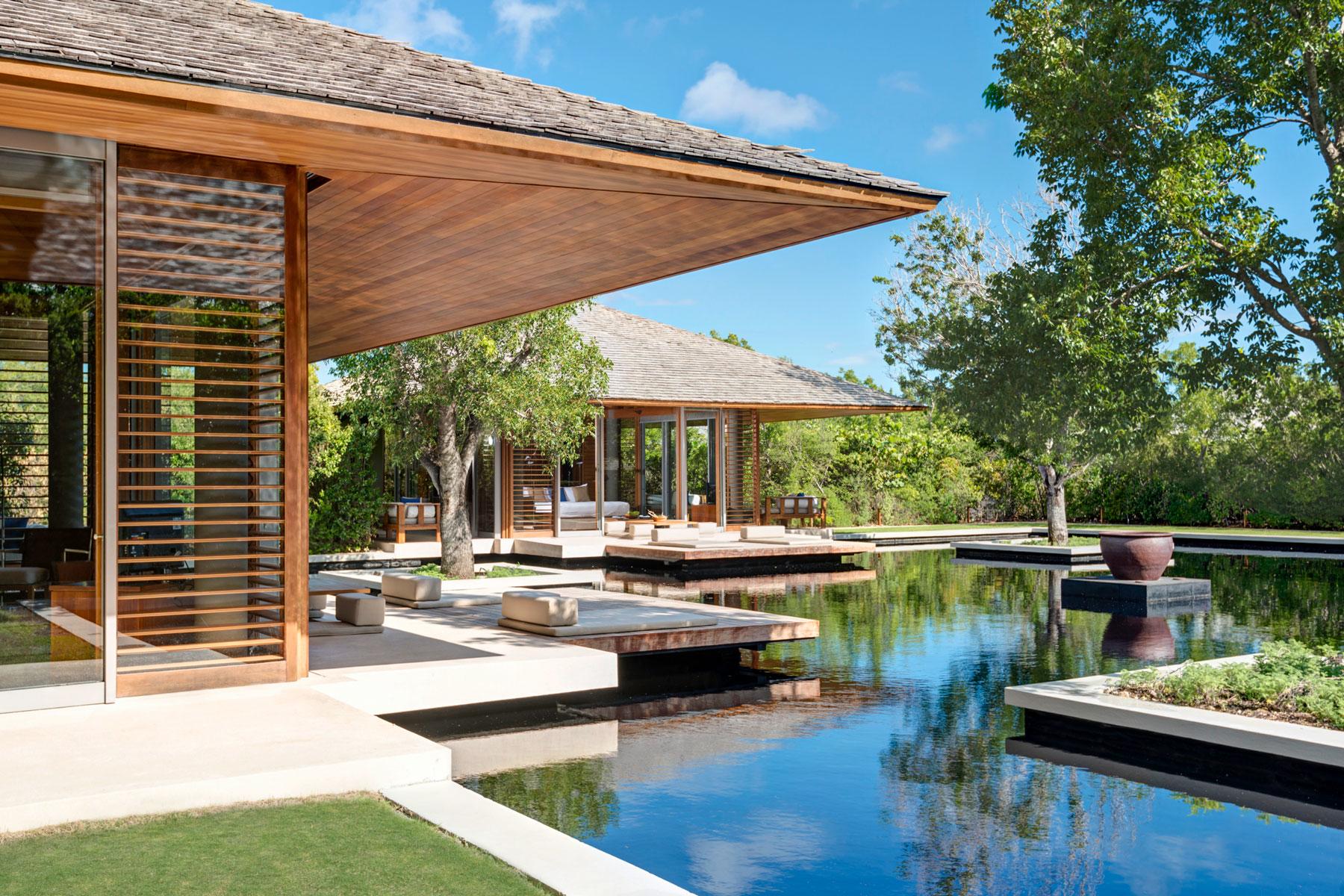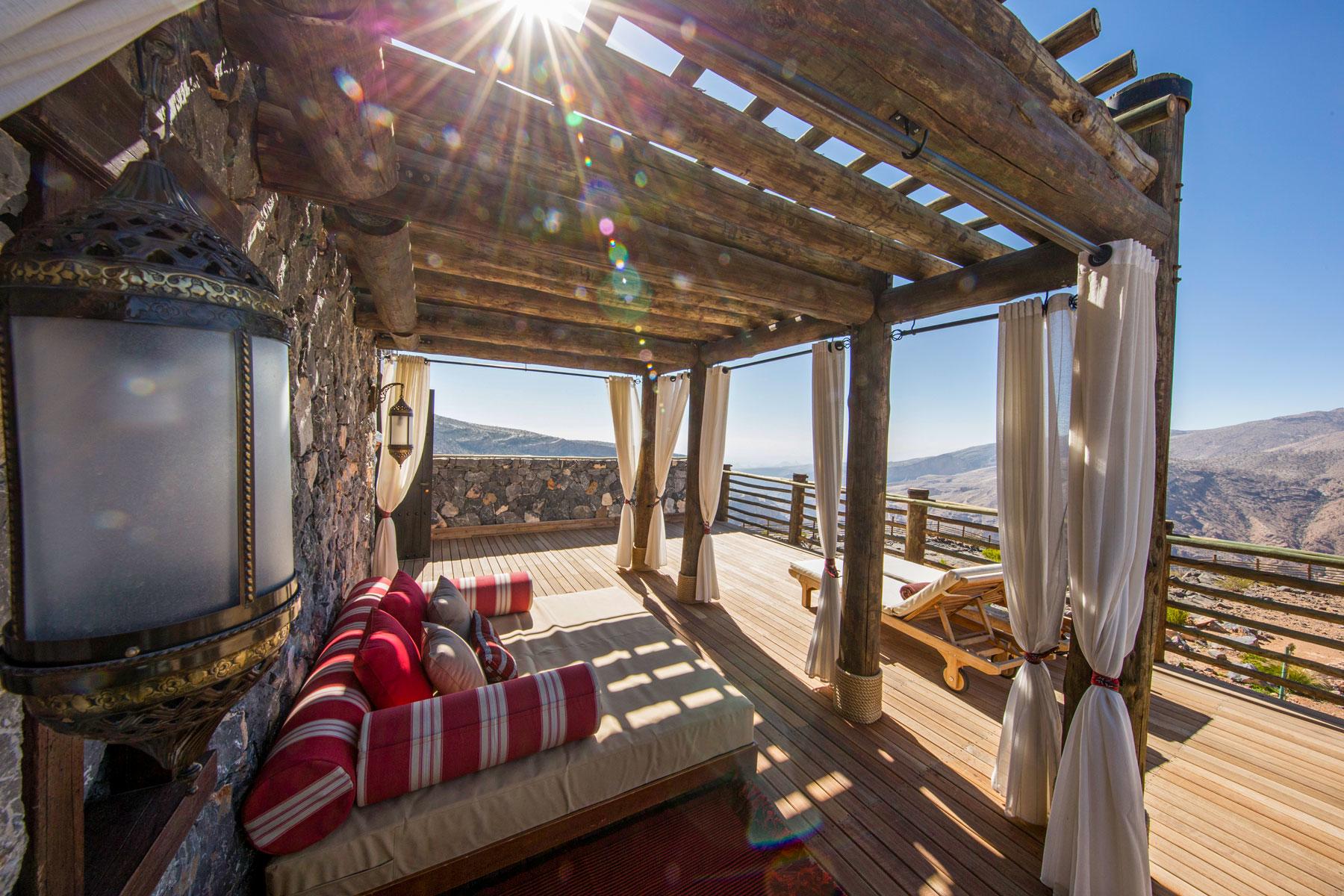
The Best Hotels
in the
Middle East
From Dubai to Tel Aviv, the Middle East is home to some of the world’s tallest skyscrapers, most beautiful architecture, and famously arresting vistas. Whether you’re drawn by the souks or the Dead Sea, or newer attractions like foodie tours of Palestinian delicacies or indoor skiing, this land of superlatives never disappoints. And, from uber-luxurious stays in Dubai to beautifully timeless properties in Petra, neither do its hotels.

New & Noteworthy
Al Seef Hotel by Jumeirah
Dubai, United Arab Emirates
Set along the south banks of Dubai Creek, the Al Seef Hotel is a reflection of its neighboring Al Fahidi historic district with soaring barajeel towers, Arabian architecture, and centrally situated courtyard. Like its art-centric neighbor, the Al Seef’s design incorporates ancient Emirati aesthetics like woven fabrics, wood beams, and antique light switches in a way that feels entirely modern. The 190 guest rooms are spread throughout 22 buildings, where each room is decorated with a natural color palate and adorned with elements reminiscent of Dubai’s pearl diving and trading heritage. Traditional abras are available for guests to cross the creek for shopping at the Dubai spice souk or the famous gold souk.
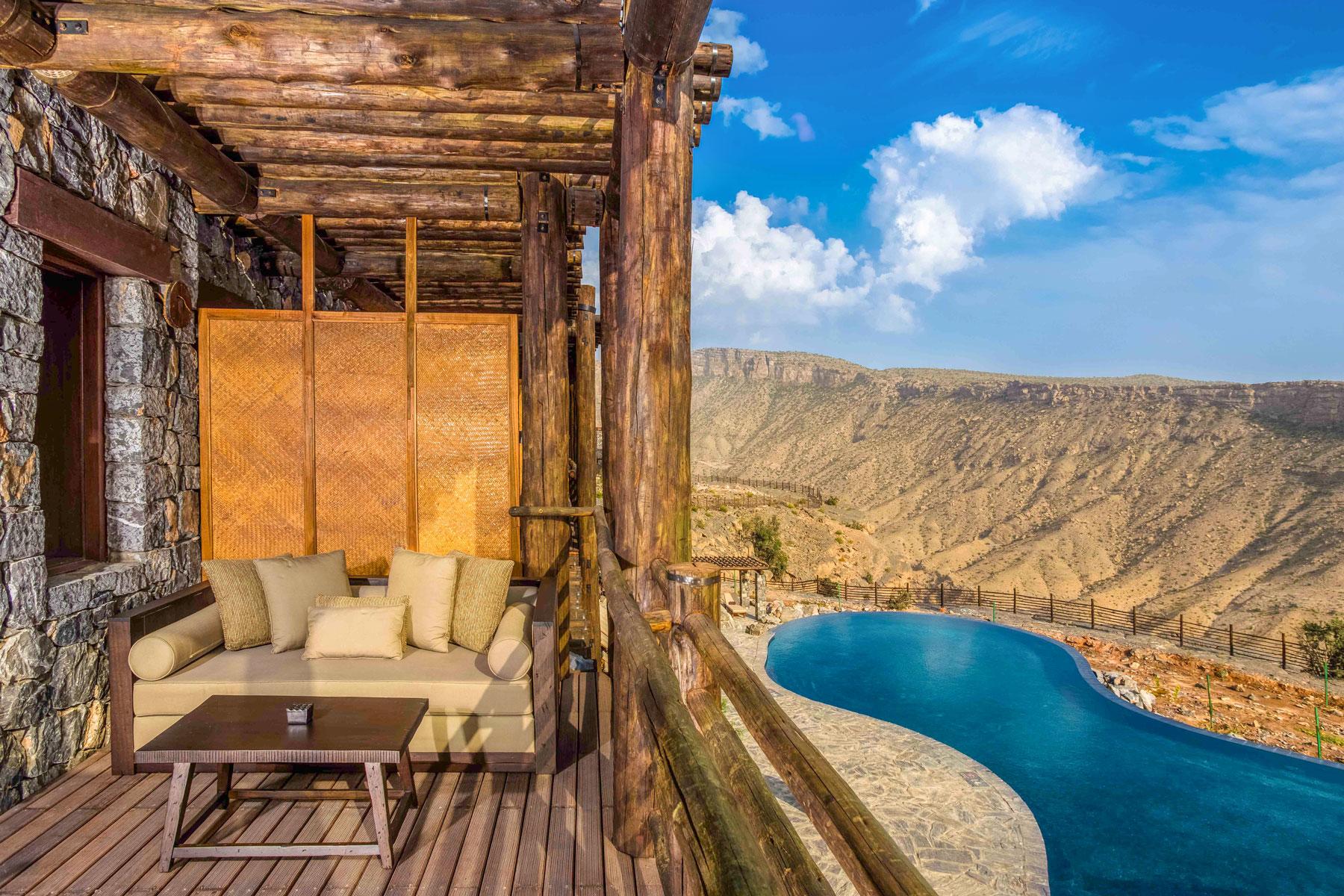
Remote Retreats
Alila Jabal Akhdar
Jabal Akhdar Mountains, Oman
The architecture of this clifftop sanctuary was inspired by the ancient forts of Oman’s rich history, where local stones and heavy wooden beams stand as a reminder of the country’s proud past. This eco-friendly hotel looks out over the Al Hajar Mountains, hovering 2,000 meters above sea level on the edge of a striking gorge. Privacy is key at the Alila Jabal Akhdar, where even with 84 suites and two villas, it’s possible to feel like the only guest in this serene desert oasis. Along with dark wood furniture and curated accent pieces like handmade pottery from Bahla and copper ornaments, each suite features a hand-painted juniper leaf mural by a local artist. The rugged landscape surrounding this property acted as inspiration for many of the onsite activities, including trekking the region’s highest Via Ferrata and exploring a hidden cave along the wadi floor.

Super Splurge
Burj Al Arab Dubaiv
Dubai, United Arab Emirates
Since opening in 1999, the Burj Al Arab has redefined the physical and luxury landscape of Dubai and the rest of the world with its over-the-top amenities and distinct sail-shaped silhouette. The hotel is estimated have cost $1 billion to construct and a recent addition included importing 1,000 tons of the softest sand in the world from Saudi Arabia to create a luxury beach Terrace. Each of the 202 duplex suites comes with a personal butler (available 24-hours), as well as full-size Hermes toiletries and a pillow menu that lists 17 options to complement the Eiderdown comforters made from the rarest bedding material in the world. Interiors are nothing short of impressive, where their 30 varieties of Italian Statuario marble, more than 1,790 square-meters of 24-carat gold leaf embellishments, and more than 21,000 crystals set inside the largest Swarovski crystal ceiling in the world are just footnotes to this 56-floor hotel’s grand reputation.
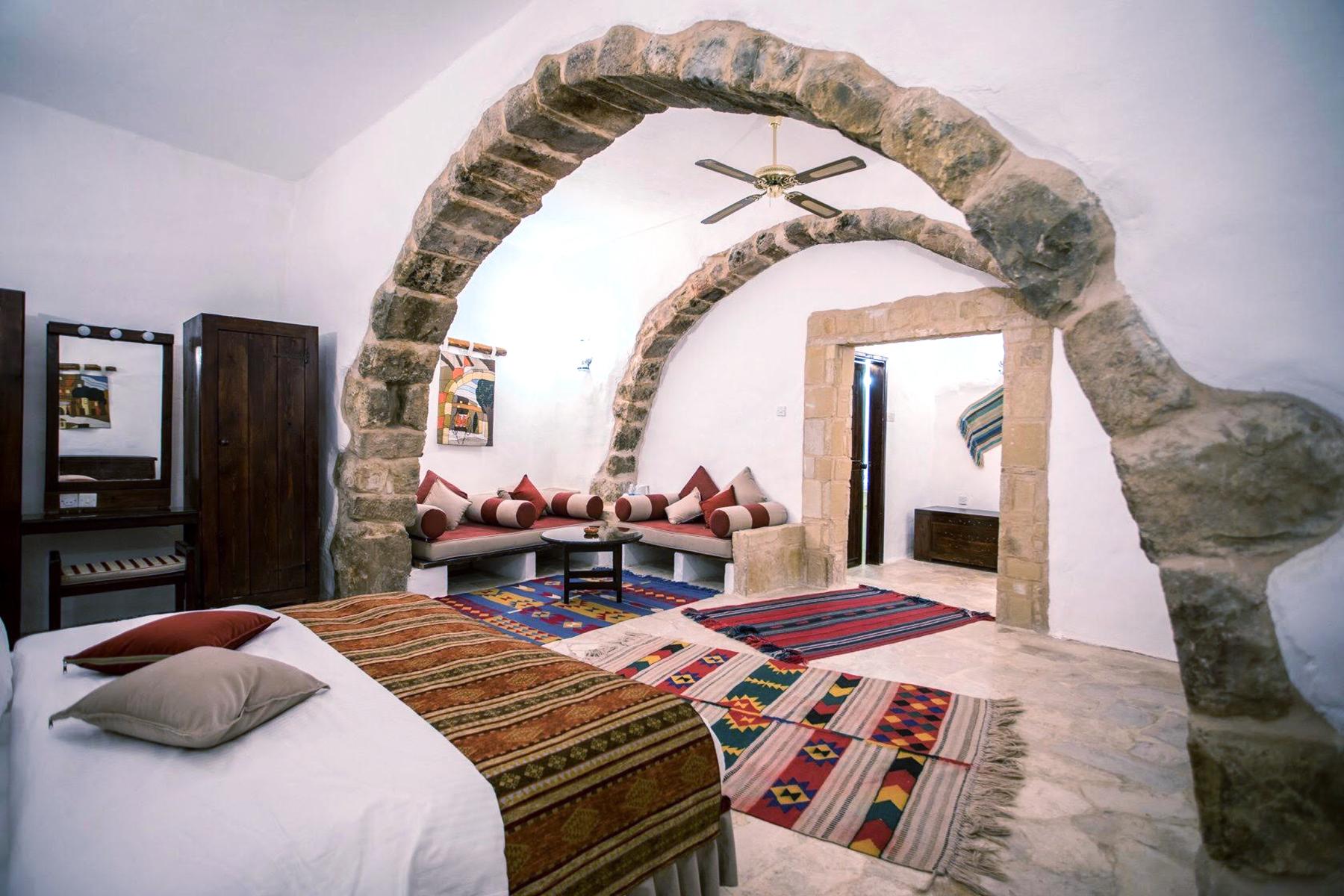
Timeless Treasure
Hyatt Zaman Petra
Petra, Jordan
Walking through the gates of the Hyatt Zaman Petra feels like walking into an ancient Jordanian village, and that’s because it once was a traditional Jordanian village. This 111-room hotel was created from an abandoned 19th–century village, where local stones and winding pathways guide guests through elaborate archways and communal courtyards. Much of the original architecture remains, while modern updates like free Wi-Fi, heating and air conditioning, a hammam, and an outdoor swimming pool make life at the Hyatt Zaman Petra easy. The hotel offers free shuttles to Petra, located less than eight miles from the property, and welcomes guests back with traditional Bedouin hospitality and food at its onsite restaurant Sahtain.

Cheap & Chic
Link Hotel & Hub Tel Aviv
Tel Aviv, Israel
Located on King Saul Avenue, the LINK Hotel & Hub acts as an homage to Tel Aviv’s thriving art scene. Each floor of this hip hotel is a work of art, where French photographer Daniel Siboni curated works from 12 Tel Aviv street artists to line the corridors and guestrooms with bold pieces. There is neither a reception desk nor bellboy when checking in at the LINK, as guests simply use the LinkApp to check in, check out, and access their guestrooms during their stay. The app also functions as the in-room phone for making free calls throughout Israel, as well as serving as the controller for the room’s temperature, color, and lighting. The Hub portion of the hotel functions as a co-working space, living room, and restaurant, where common tables sit paces from retro video games and a craft cocktail bar.
